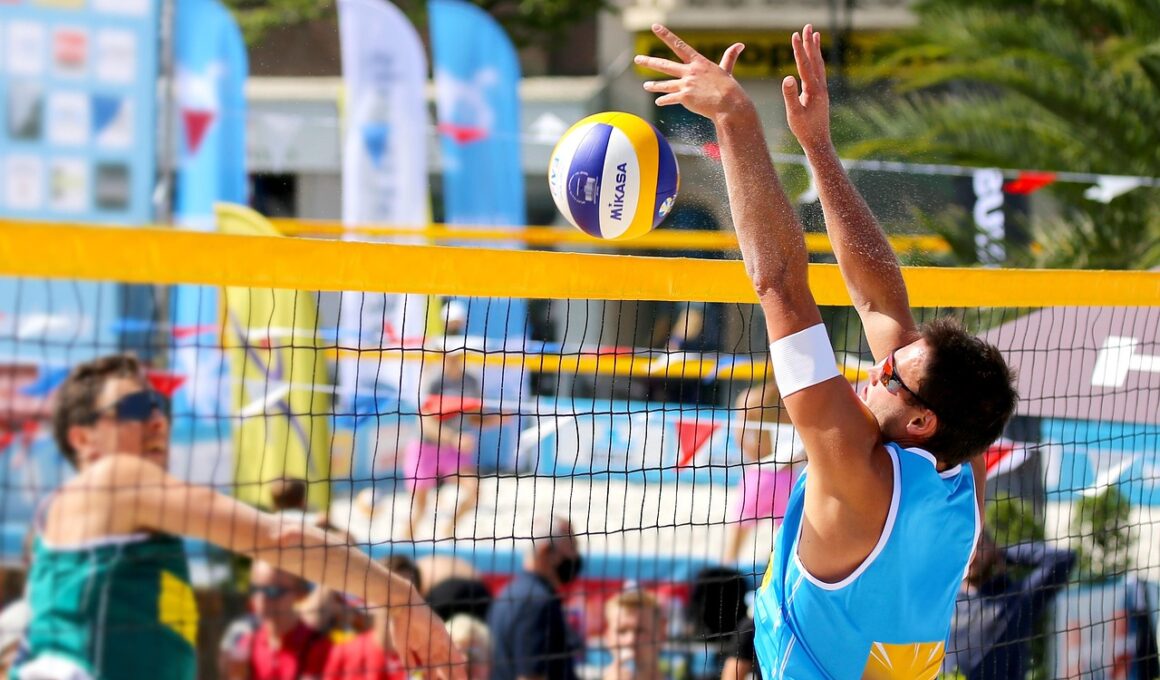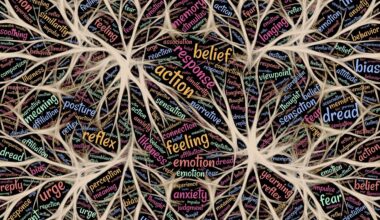Plyometric Periodization: Planning Volleyball Training for Peak Performance
Plyometric training is a highly effective method for enhancing the performance of volleyball players. This training focuses on explosive power, speed, and agility, which are essential attributes for a successful athlete. Implementing a structured plyometric program requires an understanding of the physiological demands placed on the body during volleyball activities. Research suggests that incorporating these exercises can significantly improve vertical leap and overall athletic performance. The key to effective plyometric training is periodization, which involves strategically planning the workouts to correspond with the competitive season. This method prevents overtraining while maximizing performance gains. An effective periodization plan typically consists of three main phases: preparation, competitive, and transition. Each phase must incorporate specific exercises tailored to different performance objectives. When training for plyometric explosiveness, players should focus on the biomechanics of jumping and landing. Exercises like box jumps, depth jumps, and bounding drills are excellent choices to include. Coaches should monitor the athletes’ progress throughout the phases, ensuring that they maintain optimal training loads. Proper recovery and nutrition are crucial components that support the effectiveness of plyometric training.
The first phase of plyometric training, known as the preparatory phase, aims to build a foundation for explosive strength. This phase emphasizes strengthening the muscles, tendons, and ligaments to prepare them for the high-impact nature of plyometric exercises. A variety of exercises can be included, such as strength training, basic jumps, and agility drills. The focus during this phase is on technique, ensuring that athletes execute movements effectively to reduce the risk of injury. Incorporating strength training into this phase can enhance muscle activation, which translates to improved performance on the court. It is essential to include specificity in training; exercises like squat jumps mimic the jumping actions seen in volleyball. Athletes should gradually increase the intensity and volume of their workouts while maintaining consistent technique. This phase typically stretches over a few weeks, giving athletes enough time to adapt without experiencing fatigue. As players progress, they will transition into more advanced plyometric exercises. Coaches often utilize periodized plans to help maintain optimal performance throughout the training cycles. Consistency in training and evaluation is key in achieving long-term success and improvement.
Transitioning to the Competitive Phase
The competitive phase of plyometric training is critical as it focuses on maximizing explosive power and athletic performance. During this phase, athletes engage in more specific plyometric exercises that directly translate to in-game performance. This can include more dynamic movements such as single-leg hops, broad jumps, and various combinations of jumps that simulate the actual game situations players encounter. It is essential to incorporate a variety of drills that emphasize speed, agility, and power, allowing players to develop their skills in a more applied context. Athletes should also integrate sport-specific skills with their plyometric routines. Implementing drills such as approach jumps and spiking movements is critical for transferring the explosive energy developed during training into their game performance. Monitoring the players’ workloads becomes crucial during this phase, as high-intensity efforts can lead to fatigue and potential injury if not managed properly. The focus should be on quality over quantity, ensuring athletes execute movements with precision and control. Feedback from coaches is vital to help players refine their technique and gains throughout this phase. Testing of vertical jumps can also be beneficial in assessing improvements.
Recovery is another essential aspect of the competitive phase, as allowing adequate rest helps athletes bounce back stronger. Implementing specific recovery techniques, including physical therapy modalities, foam rolling, or swimming, can enhance overall recovery effectiveness. Nutrition also plays a vital role; athletes must ensure they are fueling their bodies with the right nutrients to support muscle recovery. Adequate protein intake, hydration, and timely meals can significantly influence performance and recovery outcomes. Analyzing data from training cycles can provide insights into athletes’ recovery needs, allowing coaches to adjust training intensity or volume accordingly. Feedback from athletes regarding their perceived exertion can aid coaches in making necessary modifications. Emphasizing mental recovery through relaxation techniques or mindfulness practices should not be overlooked, as mental fatigue can hinder physical performance. Together, these strategies ensure that athletes remain sharp, focused, and strong for upcoming competitions. The culmination of the competitive phase is often highlighted by the analysis of individual performances during matches, allowing for real-time adjustments to training regimens based on observed outcomes.
The Transition Phase and Off-Season Recovery
After the competitive season wraps up, athletes enter the transition phase, strategically designed to allow the body to recover and adapt. During this phase, plyometric training should gradually decrease in intensity while focusing more on recovery and cross-training. Coaches should encourage athletes to engage in alternative training activities that minimize the risk of injury while maintaining fitness levels. Activities such as swimming, cycling, or yoga not only promote recovery but also improve overall athleticism without stressing the joints excessively. It is vital for players to disconnect mentally from the season, as mental fatigue can impact motivation and performance in future training cycles. Engaging in light plyometric activities during the transition phase can help retain some explosive capability without leading to fatigue. Focus should also move towards rehabilitation for any lingering injuries sustained during the competitive season. This period presents an invaluable opportunity for athletes to reassess their fitness goals and strengthen weaker areas identified throughout the season. Attention to flexibility and mobility work becomes crucial during this time to prepare athletes for upcoming rigorous training demands.
Planning future plyometric training sessions should involve careful consideration of data collected from the previous season. Coaches and athletes can work together to evaluate performances, identify strengths, and pinpoint weaknesses that need addressing. Drawing on the experiences of the competitive phase, including effective exercises and drills, ensures that future programs are tailored to players’ specific needs. Setting realistic performance targets for the upcoming season helps to keep athletes engaged and committed to the training process. Utilizing technology and monitoring tools can support this evaluation process, providing more precise data regarding performance metrics. The information gathered can influence training load adjustments, ensuring that athletes remain optimally challenged without risking injury. Collaboration between players and coaches enhances the training process, creating a cohesive training environment. Regular check-ins can maintain motivation, and goal-setting can be facilitated through both individual and team sessions. Ultimately, building a structured plan based on previous experiences allows athletes to continuously evolve their plyometric training, advancing their capabilities and performance levels for future competitions.
Conclusion: Emphasizing Time for Reflection
After a thorough periodization strategy focusing on plyometric training for volleyball players, reflection becomes vital. Athletes must take the time to closely analyze their overall athletic journey. This introspection enables individuals to understand what has worked in their training and areas that may require adjustment. Coaches also play a vital role in this process, providing insights based on observations and the athletes’ body responses throughout training. Gathering feedback allows for open communication about performance aspirations and training experiences. Reflecting on athletes’ collective experiences creates a strong team culture founded on communication and trust. Emphasizing the review process solidifies the connection between practice and improvement, establishing a pathway to future growth. Athletes should consider not only physical aspects but also mental performance and resilience encountered during the season. Incorporating strategies learned during the reflective process helps athletes combat challenges ahead. The journey continues beyond the training fields and courts; planning for the next season starts now. Remaining dedicated to personal and collective growth through structured training, recovery, and reflection will support athletes revitalizing their performance as they advance in volleyball.
In conclusion, the success of a plyometric periodization program comes down to a well-balanced approach to training. The interplay between strength, explosiveness, and recovery sets the foundation for volleyball players’ peak performance. As athletes focus on improving their plyometric abilities, they should also prioritize injury prevention and proper mechanics in their exercises. The implementation of a structured plan covering the preparatory, competitive, and transition phases guarantees that athletes develop the desired athletic capabilities. Notably, finding a balance between intensity and recovery ensures that players avoid burnout and injuries. Coaches’ awareness of athletes’ physical and mental states enables them to provide tailored guidance that enhances training effectiveness. Regular assessments help identify areas that require further development, helping to maintain motivation and progress. Adapting each phase to the unique characteristics of the athletes involved is paramount. Building a culture of consistency and commitment fosters trust, ensuring that every training session is purposeful. In this regard, plyometric periodization isn’t merely a training strategy; it’s a holistic method to maximize volleyball players’ potential and performance across all levels.


